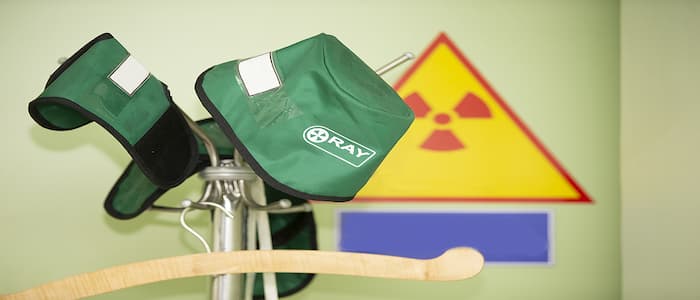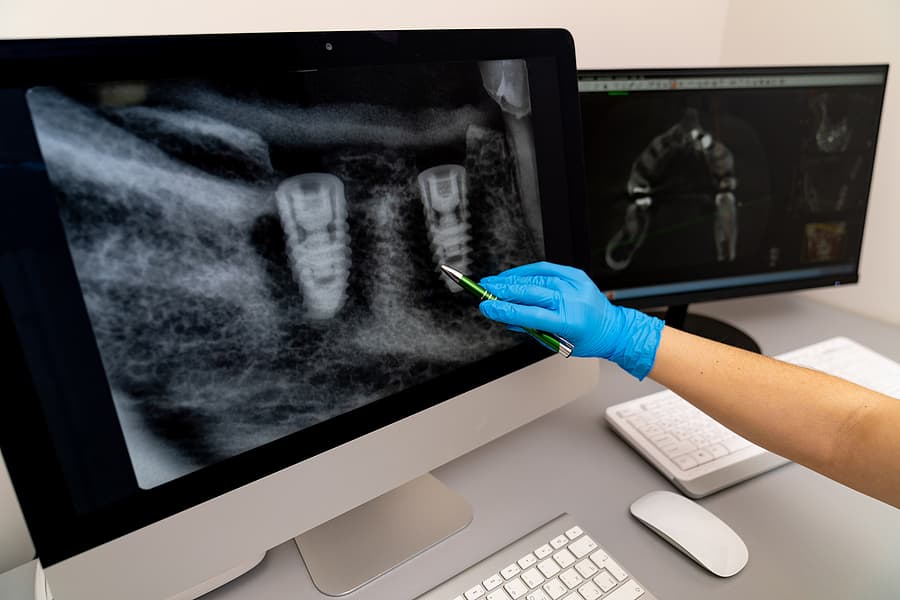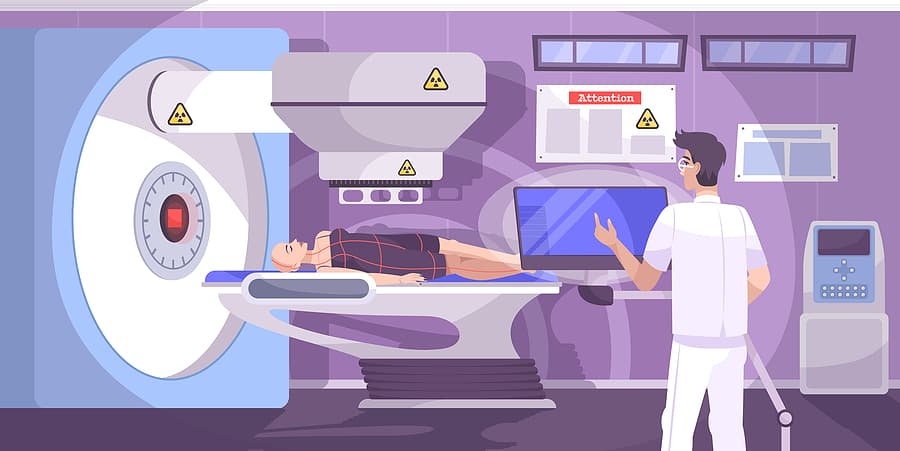Can Medical Waste Be Radioactive?

While hospitals and medical centers aren’t nuclear power plants, they do work with radiation regularly. From nuclear medicine to mammography, to CT scans, and more, it’s likely that many patients will encounter some form of radioactive treatment at some point in their lives. As with any medical procedure, these treatments create waste. The different types of radioactive medical waste possess different dangers and require different disposal methods.
When medical facilities produce radioactive waste, they can’t ship it straight to the landfill. You must store radioactive medical waste until it is safe to dispose of, a process that takes weeks to years depending on the type.
Isotopes Used in Radioactive Medicine
You can find various types of radioactive materials in medicine. Hospitals treat or diagnose nearly a third of patients with radiation or radioactive materials. They’re an incredibly important part of modern medicine but you must handle them with appropriate caution. Types of radioactive medical waste include:

Cobalt-60: This isotope is typically used in cancer treatment, either as an implant or as external radiation exposure. Worldwide, nearly 15 million patients undergo radiation therapy that involves Cobalt-60.
Fluorine-18: This isotope makes up the majority of positron emission tomography (PET) scans. It allows doctors to analyze changes happening within cells in the body, often for patients with brain conditions, heart conditions, or cancer.
Iodine-131: This form of Iodine focuses on cancers of the thyroid gland. It is used in both the diagnosis of the cancer and its treatment.
Iodine-125: Hospitals also use this Iodine isotope in cancer treatment, for interstitial permanent brachytherapy. Historically, it was used for rare tumors but is now being applied more broadly.
Technetium-99m: Technetium operates as an imaging isotope for organs across the body. It allows doctors to evaluate whether organs are receiving enough blood flow.
Carbon-14: This form of carbon is used as a testing method for cancer patients. Carbon-14 helps doctors determine if chemotherapy will be an effective treatment option.
Xenon-133: Xenon, the only noble element on this list, conducts a similarly noble purpose in medicine. Doctors use Xenon-133 to build out an image of a patient’s lungs or to check blood flow in the brain.
Sodium-24: This isotope function directly relates to its more stable version. Medical professionals use Sodium-24 to determine if a patient is taking in sodium at normal ranges.
Sodium-22: Sometimes you need more than one element to do a job, and this is the case for Sodium-22. PET scans use sodium-22 similar to Fluorine-18.

Phosphorus-32: Another cancer-fighting isotope, Phosphorus-32 finds its medicinal use in the treatment of tumors and in the diagnostic process of cancers.
Calcium-45: Similar to Sodium-24, Calcium-45 functions as a tracer to determine if a patient absorbs calcium at healthy levels.
Yttrium-90 Colloid: Doctors use this element in radiation therapy to target tumors they are unable to operate on.
Gold-198: This version of gold is not suitable as currency, but it does provide an effective treatment for prostate, cervical, breast, and skin cancers through brachytherapy, or internal radiotherapy.
Strontium-89: Certain kinds of cancer cause bone pain, and Strontium-89 gives off radiation that helps alleviate that pain.
How to Dispose of the Different Types of Radioactive Medical Waste
The way you dispose of radioactive waste depends on its half-life. The processes are fairly straightforward, but isotopes with long half-lives require more planning and consideration. The goal for most of these disposal methods is to provide time for the material to decay until it is under 1.35 microcuries in radiation. At this level, you can safely dispose of it through the dilute and disperse method.
Isotopes with Short Half Lives
Types of radioactive medical waste on the list with short half-lives include Fluorine-18, Technetium-99, Xenon-133, Sodium-24, Yttrium-90, and Gold-19. With their short half-lives, they’re ready for the delay and decay method of radioactive waste disposal.
To follow this, seal them in radioactive containers in a radiation room for at least 10 half-lives until they test under the 1.35 microcuries limit. Once the materials go under the limit, they can be dispersed after flushing with water as a liquid or disposed of as normal waste if solid.
Isotopes with Longer Half-Lives
For isotopes with longer half-lives, the concentrate and contain method makes the most sense. Carbon-14 possesses the longest half-life on the list at 5,730 years, but its low radioactivity means it’s likely safe to dispose of through normal methods.
For the others with high radioactivity, it can depend on your facility. Iodine-131 and Phosphorus-32 decay at an average of 8 days and 14 days, respectively. For facilities with the space, or willing to contract one that does, delay and decay can work. However, with isotopes like Iodine-125, Strontium-89, or Calcium-45, with respective half-lives of 60 days, 50 days, and 165 days, respectively, delay and decay becomes impractical.
Two isotopes on the list have half-lives in the years. The half-life of Cobalt-60 is 5.3 years, and Sodium-22 has a half-life of 2.6 years. For these isotopes with long half-lives, containing them and sending them off to a designated burial site is typically the best option.
Medical Waste Pros Helps with Radioactive Medical Waste
If you’re one of the thousands of providers of nuclear or radioactive medicine and looking for a disposal solution, Medical Waste Pros can help. Give us a call at (888) 755-6370, or fill out the form on the page, and we’ll connect you with a certified and affordable provider who can take care of your medical waste needs, radioactive or otherwise.










